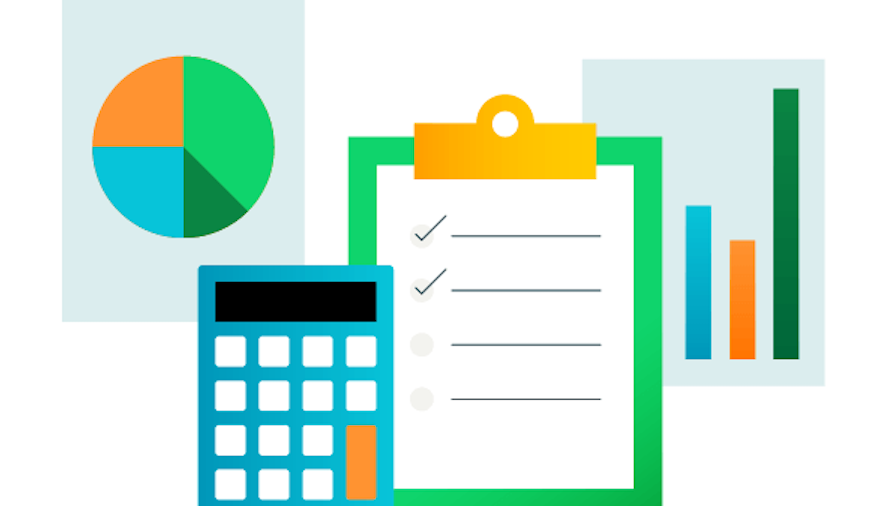As a business owner, you need to know how to track your progress toward achieving your business objectives. Looking at things like revenue and profit on a balance sheet can only take you so far. You should continually seek more tangible ways to measure progress.
Key performance indicators (KPIs) are the best performance measurement metrics you can use to track progress towards your business goals. Tracking relevant KPIs can assist in decision-making, help you set strategic objectives, and allow you to evaluate your business progress in real-time.
Defining and choosing the right KPIs for your business
When you use KPIs, you want to make sure that they align with your business goals. To help with this, you need to make sure your business goals are measurable, actionable, and include a reasonable time frame.
For instance, instead of setting a goal “to be the best company in the world,” your goal should be something along the lines of “to be a Fortune 500 company by 2025. To do this, we’ll increase revenues from XYZ product lines while cutting operating costs.” Another example could be something like “attract 500 new customers by the beginning of Q2. To do so, we’ll increase spending on social media marketing campaigns by $10,000 and will focus on sites like LinkedIn.”
Because the goals in these examples are measurable and actionable, business owners can easily build their KPIs around them. A good KPI is one that will allow you to track the critical success factors related to the goal. In our first goal, the company will focus on financial metrics related to revenues from the XYZ product line and operating costs. In the second example, the company will track social media spending and customer acquisition.
For further clarification, consider the following KPI example. Imagine there are two businesses. One owns a brick-and-mortar store, while the other operates solely online. The company with the physical retail location will have KPIs like:
- Sales per square foot, a comparison of revenues versus rent costs
- Average transaction value, an indicator of how much shoppers spend in the store
- Shrinkage, a measure of loss of inventory not caused by sales. Loss caused by theft is a perfect example.
The online company doesn’t need to concern itself with these KPIs quite as much—if at all. Instead, the company should churn out a KPI report that is more relevant to its specific business transactions. Examples include:
- Conversion rate, comparing the total number of sales to website traffic
- Shopping cart abandonment rate, which shows how often users leave without completing their purchase
- Average order value, a measure of how much a customer spends when shopping on your site
You need to come up with your own KPIs to meet your business goals. The goals of one business can vary drastically from those of another. You have some free reign in crafting KPIs, but you should make sure they meet these four criteria:
- They are actionable: Your KPIs should tangibly and objectively show you the improvements that you need to make to help your business.
- You can measure them accurately: You should have no problem tracking your KPIs. The best KPIs are easy to calculate and interpret. KPIs should be well-defined, quantifiable measurements.
- They are timely: Using old data exclusively won’t give you a measure of what’s going on currently. Old data is only useful if you use it as a comparison tool for current data.
- They impact the bottom line: Whether your goal is to improve net profit margins or customer satisfaction and retention, an improvement in your KPIs should result in progress toward your goal.
9 KPIs that can help you grow your business
KPIs cover everything from financial metrics like profit margins and cash flow, to customer and marketing metrics like acquisition and return on investment. No matter what industry you’re in, these are 9 common KPIs you can use to track business growth.
1. Cash flow forecast
Cash flow projections, or cash flow forecasts, help businesses assess whether their sales and profit margins are appropriate—making this KPI one of the most critical metrics to track.
To make your cash flow forecast, start by estimating your sales to predict the amount of cash that may come into your business each month. From there, calculate your days sales outstanding—this tells you the average number of days it takes to receive payment from customers. Next, estimate the fixed and variable expenses your business will be responsible for paying each month. Finally, bring it all together. Add the current month’s projected receipts to last month’s cash balance, then subtract your projected expenses. The result is the current month’s projected cash flow. Repeat these steps for each month. A cash flow template may help.
Savvy business owners perform regular cash flow forecasts so they can identify problems in the early stages and make necessary adjustments. Cash flow forecasts can help businesses anticipate future surpluses or shortages. They can also help with tax planning and loan applications.
2. Gross profit margin as a percentage of sales
No business can achieve success if it’s paying out more to suppliers than it’s netting in sales. Gross profit margin as a percentage of sales demonstrates total profits compared to revenue.
First, find your business’s gross profit margin by dividing your gross profit amount (revenue minus cost of goods sold) by your total revenue. Divide that value by your sales amount to find out how much of your gross profit margin makes up your overall sales. Multiply the result by 100 to express your gross profit margin as a percentage of sales.
By tracking this KPI over time, you can easily quantify how much money you’re keeping against the amount paid out to suppliers. As businesses retain more money, gross profit margin increases. But a decrease in gross margin as a percentage of sales could indicate that a company is overspending on its supplies. Owners may need to reduce overhead costs or increase prices on goods and services to compensate.










